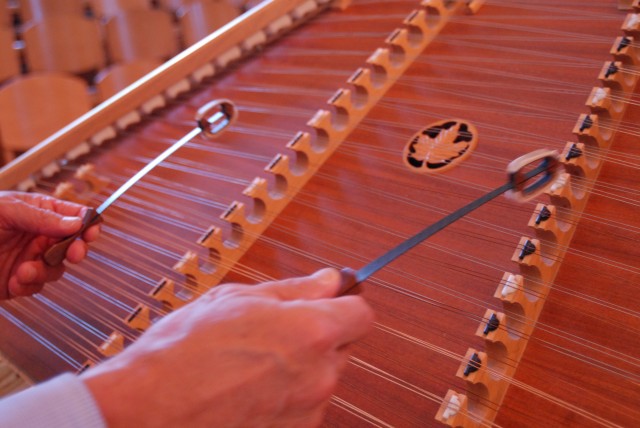When I start to play a new solo tune on the hammered dulcimer, I tend to look right away for approaches I can take that will make it my own: arranging so it says something I want it to say.
Usually I start simply: either choosing a slow and simple but exceptional melody, or I take a faster one and slow it down a bit to make room for adding arrangement details. (Faster tunes can be arranged with lots of colorings and special details too, but often I do choose to work with a slower melody line that allows lots of room for additions.)
A number of years ago I compiled a list of seventeen particular arranging components we can draw on when we’re exploring a new piece, and I’m sharing them with you here in three installments. The first six are below; I hope they bring some new, fertile thoughts to you fellow hammered dulcimists!
You can mix and match these options however you feel led, as you develop your version of a unique tune over time:
1. Bare melody -- pure and clear, perhaps as the lead while another instrument accompanies with chords.
2. Different octaves -- for example, the whole melody in the low register, then again in the high register; or ‘A’ section low then high, ‘B’ section low then high.
3. Bass drones added to melody -- playing the melody on the left bridge, reaching to the right bridge for drones, either often or seldom. Drones can be struck simultaneously with certain melody notes, or alternating with melody notes, or as ‘grace notes.’
4. Key change -- the same pattern moved up, down, or across to a different set of marked courses to change key and get variety.
5. Hammer rolls -- multiple bounces on a note for rhythmic color (but don’t use this just as a way to play long notes -- it can sound clumsy in that case).
6. Thirds harmony -- simultaneous striking of a harmony note two scale steps away from the melody, either above or below it (whichever fits best). Sometimes, as in German songs like ‘Silent Night,’ almost every note in a passage can be harmonized this way -- a pretty effect. Another way of achieving this interval if it doesn’t fit just right above or below is to use sixth harmony: to the right and down one course is the third interval moved down an octave, a sort of ‘third flipped upside down’ that has a really sweet sound.
So that’s the first installment --- plenty of options already. Look for a blog post with the next six soon!





Comments